Affiliate links on Android Authority may earn us a commission. Learn more.
LG G5 vs Nexus 6P
Over the last couple of years, Android OEMs have moved on to using metal with their flagship smartphones, be it in the form of a metal frame, a metal and glass construction, or a full metal design. Plastic has quickly fallen out of favor, and while LG was seemingly the final holdout in this regard, the company has finally given in to the trend this year with the LG G5.
However, while the use of metal has generally implied a unibody construction, LG has found a unique was of continuing to offer staples like a removable battery, with this first of a kind modular smartphone bringing a few other interesting features to the table as well.
On the other hand is the Nexus 6P, the latest and greatest that Google has to offer. Manufactured by HUAWEI, the Nexus 6P does a fantastic job with combining HUAWEI’s penchant for great design and build quality with Google’s pure software package, and with some additional features and key improvements being made, what we finally have here is a Nexus smartphone that can give any other flagship device a run for its money.
How does the latest from LG compare to the best that Google has to offer? We find out, in this comprehensive comparison between the LG G5 and Google Nexus 6P!
Design
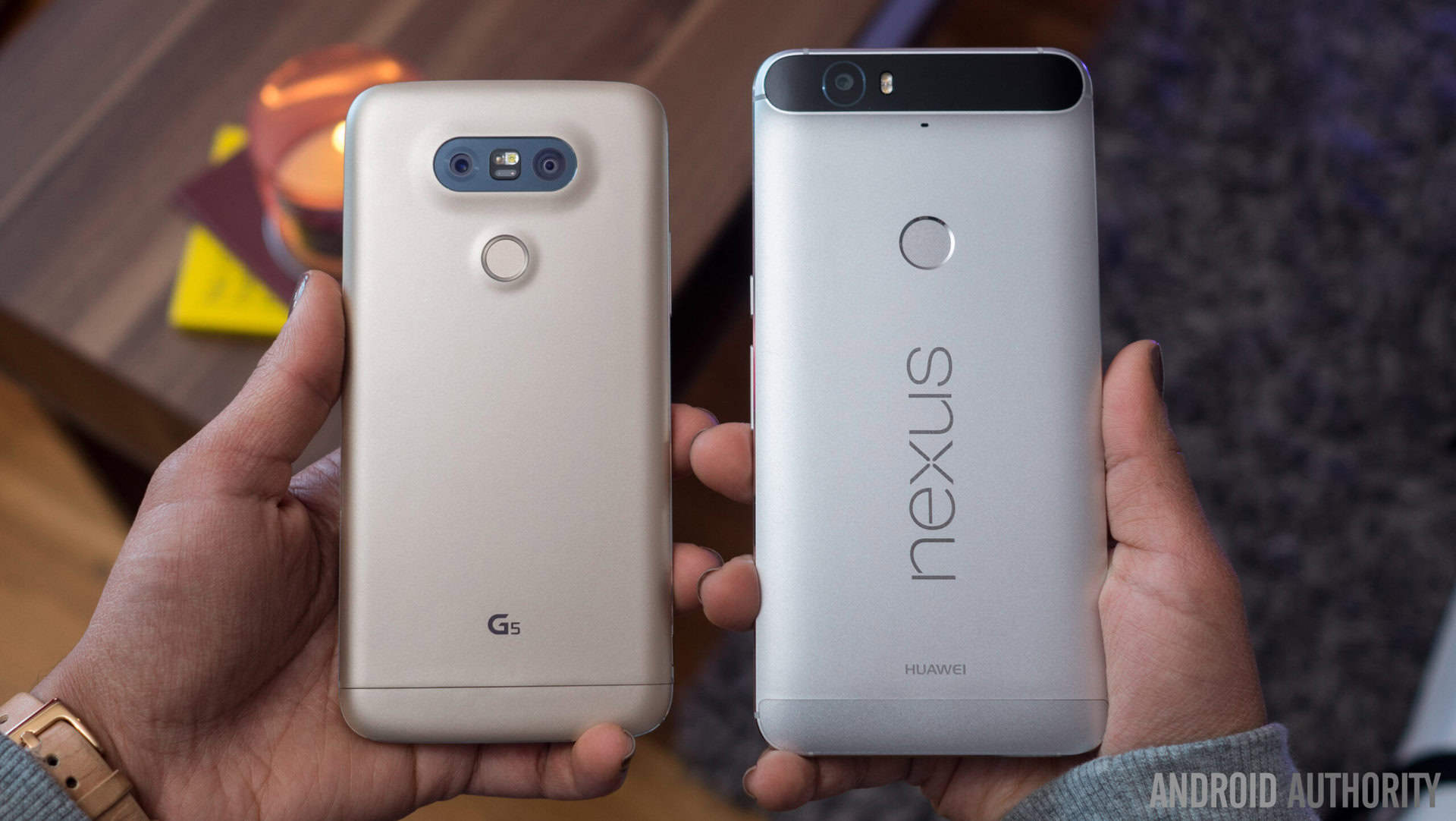
As mentioned, both the LG G5 and Nexus 6P feature all-metal builds, but in the case of the former, an additional layer of primer coating, which has already been the cause for much controversy, does make the G5 feel a little less premium and plastic-y to the touch. The overall design and build quality of the LG G5 does feel a little unpolished, with something like the sudden breaks along the chamfered edges giving the appearance of the paint chipping, and the curves at the top and bottom giving it a bent look.
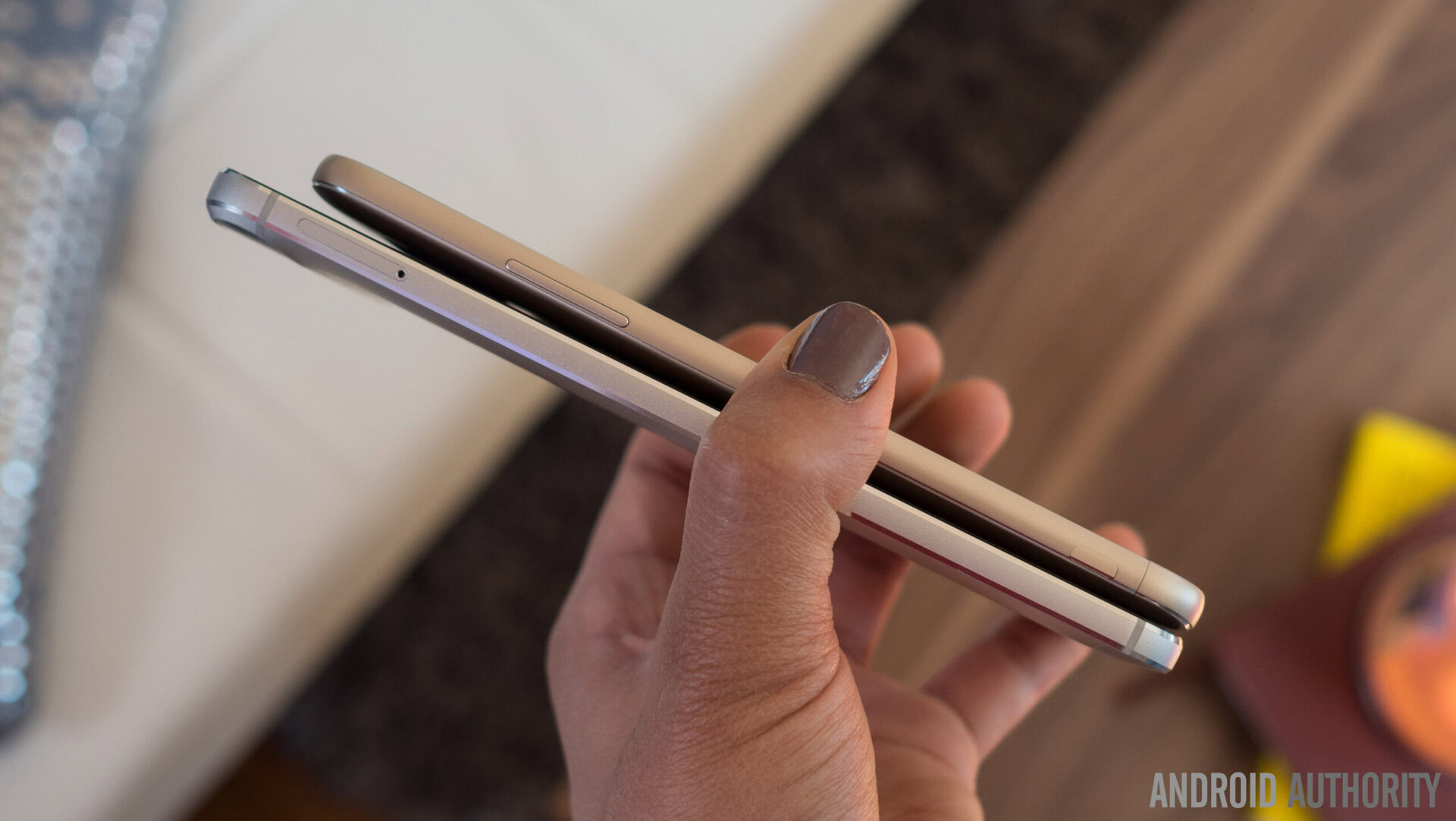
On the other hand, the Nexus 6P is truly the most well-built Nexus smartphone till date, with Google and HUAWEI paying a lot of attention to detail. The extra really makes a big difference, and the Nexus 6P certainly seems to be put together better than the LG G5. That’s not to say that there aren’t some odd choices here as well, with the black visor on the back – that houses the camera module – quite a polarizing design element.
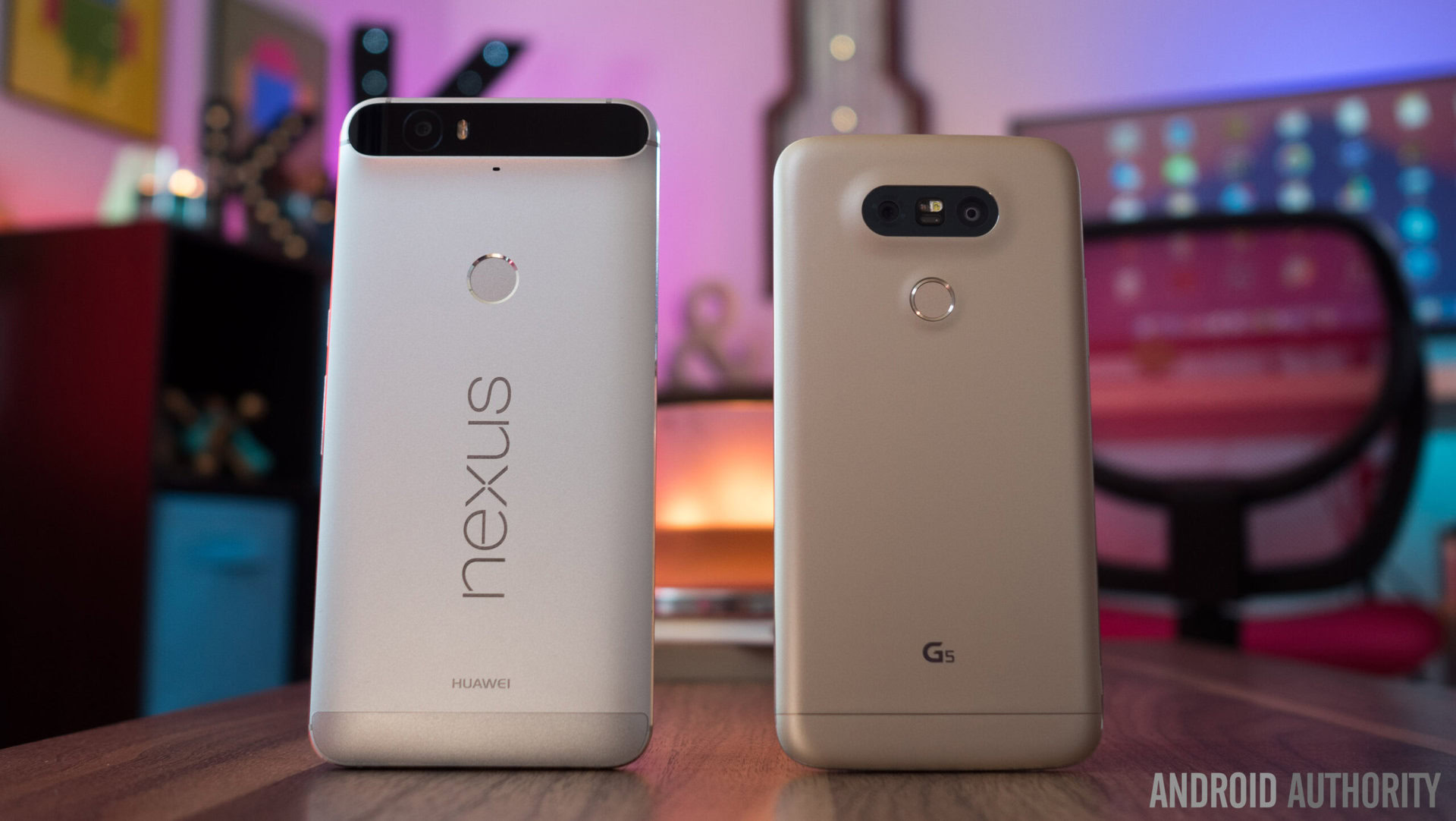
On the back of both smartphones is the fingerprint scanner, found below their respective camera setups. In the case of the LG G5, this is also quite the departure from the norm, and while the power button on the back remains, with the fingerprint reader embedded, the volume rocker has been moved to a more standard position on the side. However, fans of LG’s rear button layout will certainly miss this unique design aspect, and might even take some getting used to if you’re moving to the G5 from another LG smartphone.
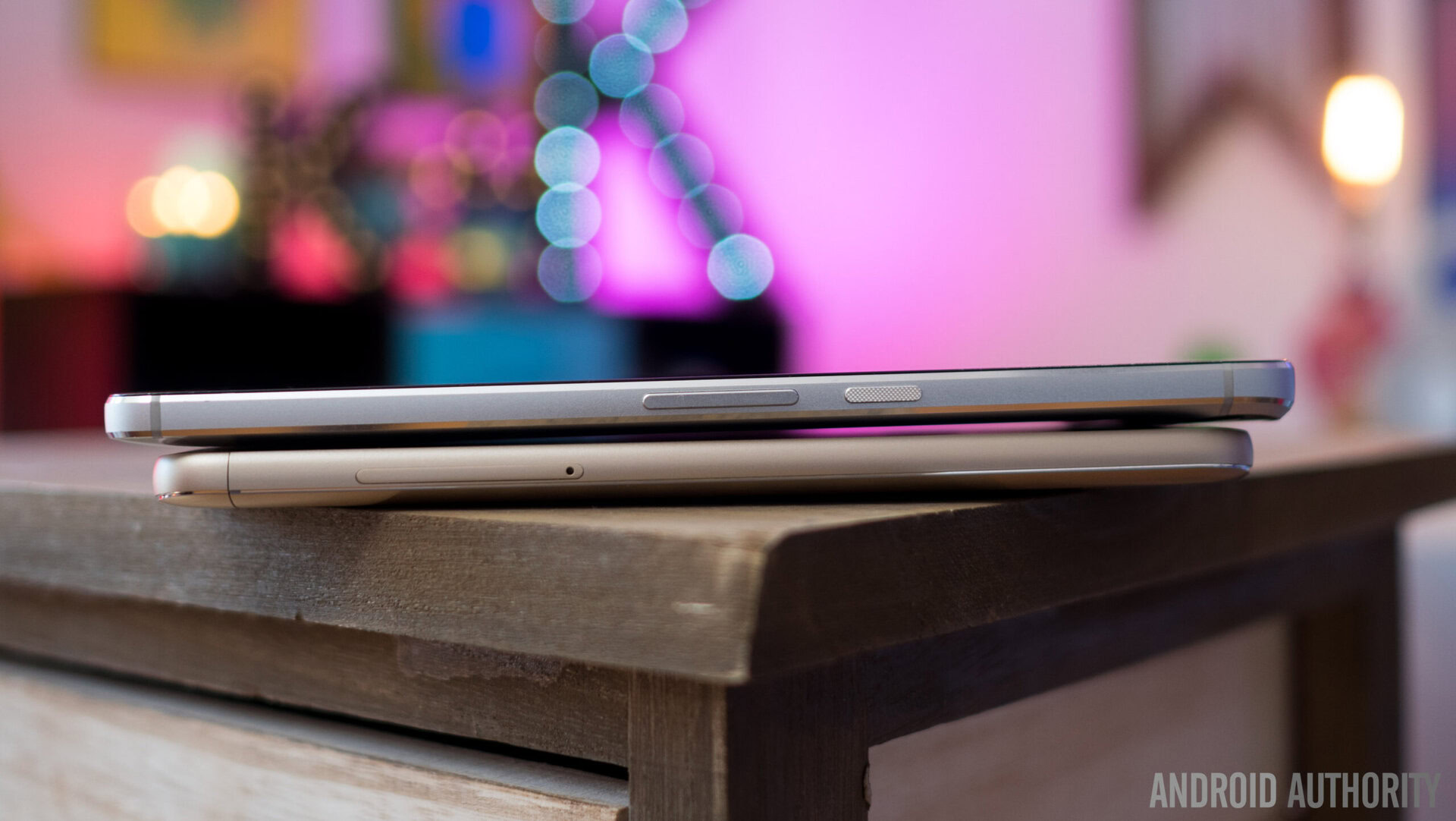
Another design factor at play when comparing the two smartphones is size, with the Nexus 6P a whole 10 mm taller than the LG G5, while also being 4 mm wider. This is, of course, because of the fact that the Nexus 6P features a larger 5.7-inch display, compared to the 5.3-inch screen of the LG G5, and adding to the height of the former is its dual front-facing speakers as well. As such, the LG G5 does offer the better handling experience here, but when putting these two smartphones next to each other, users will likely gravitate towards the Nexus 6P when it comes to the design.
Display
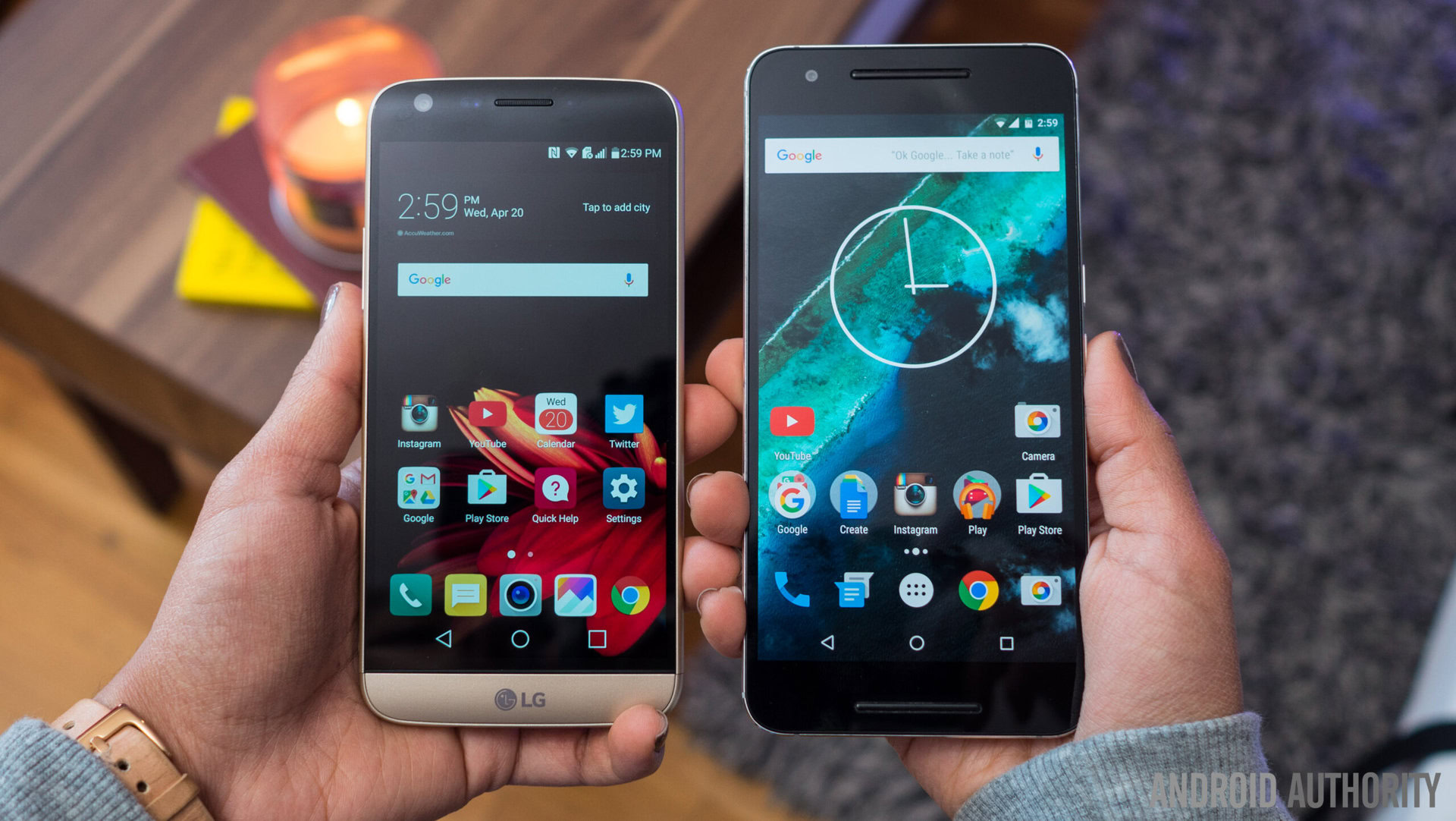
The Nexus 6P comes with a larger 5.7-inch AMOLED display with a Quad HD resolution, resulting in a pixel density of 518 ppi, while the LG G5 features a 5.3-inch IPS LCD screen, also with a Quad HD resolution, with the smaller size resulting in a higher pixel density of 554 ppi. The difference in pixel densities are not going to be noticeable, and both screens are definitely as sharp as you could hope for them to be.
What is noticeable however, the differing underlying display technologies at play here. The AMOLED screen of the Nexus 6P brings with it all that we’ve come to expect from this tech, including deep blacks and vibrant, saturated colors, that allow for a great viewing experience. That’s not to say that the IPS LCD panel of the LG G5 isn’t good of course. The color temperature is much cooler on the G5, which does make the whites look nice.
That said, when comparing the two side by side, users will likely prefer the extra punch in colors that is available with the Nexus 6P. One aspect the LG G5 does have the Nexus 6P beat is brightness, with its much brighter display allowing for far better visibility outdoors.
Performance
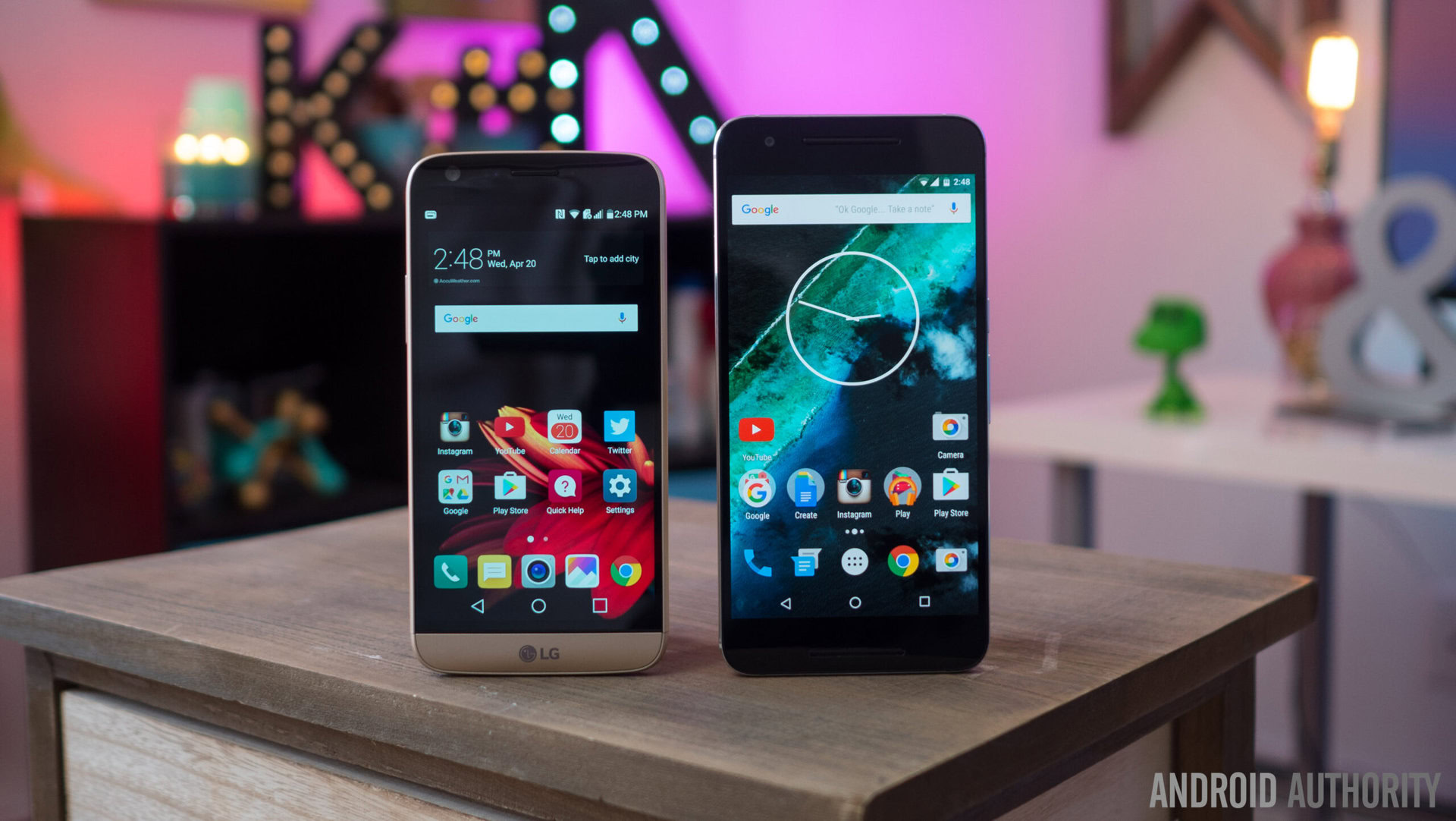
With it being the newer release, it’s no surprise that the LG G5 features the latest and greatest that Qualcomm has to offer, being powered by the quad-core Qualcomm Snapdragon 820 processor, clocked at 2.15 GHz, and backed by the Adreno 530 GPU and 4 GB of RAM. On the other hand, the Nexus 6P comes with the older octa-core Qualcomm Snapdragon 810 processor, clocked at 2 GHz, and backed by the Adreno 430 GPU and 3 GB of RAM.
You can see the expected difference in performance between the two processing packages in the benchmark results above, and this translates to real world performance as well. The G5 always opens applications faster than the Nexus 6P, even if the difference is just a split second in some cases. When loading graphic-intensive games, the LG G5 loads them much faster as well, sometimes a good 5 seconds before the Nexus 6P. Both smartphones are incredibly fast, but the LG G5 is noticeably a lot faster.
Hardware
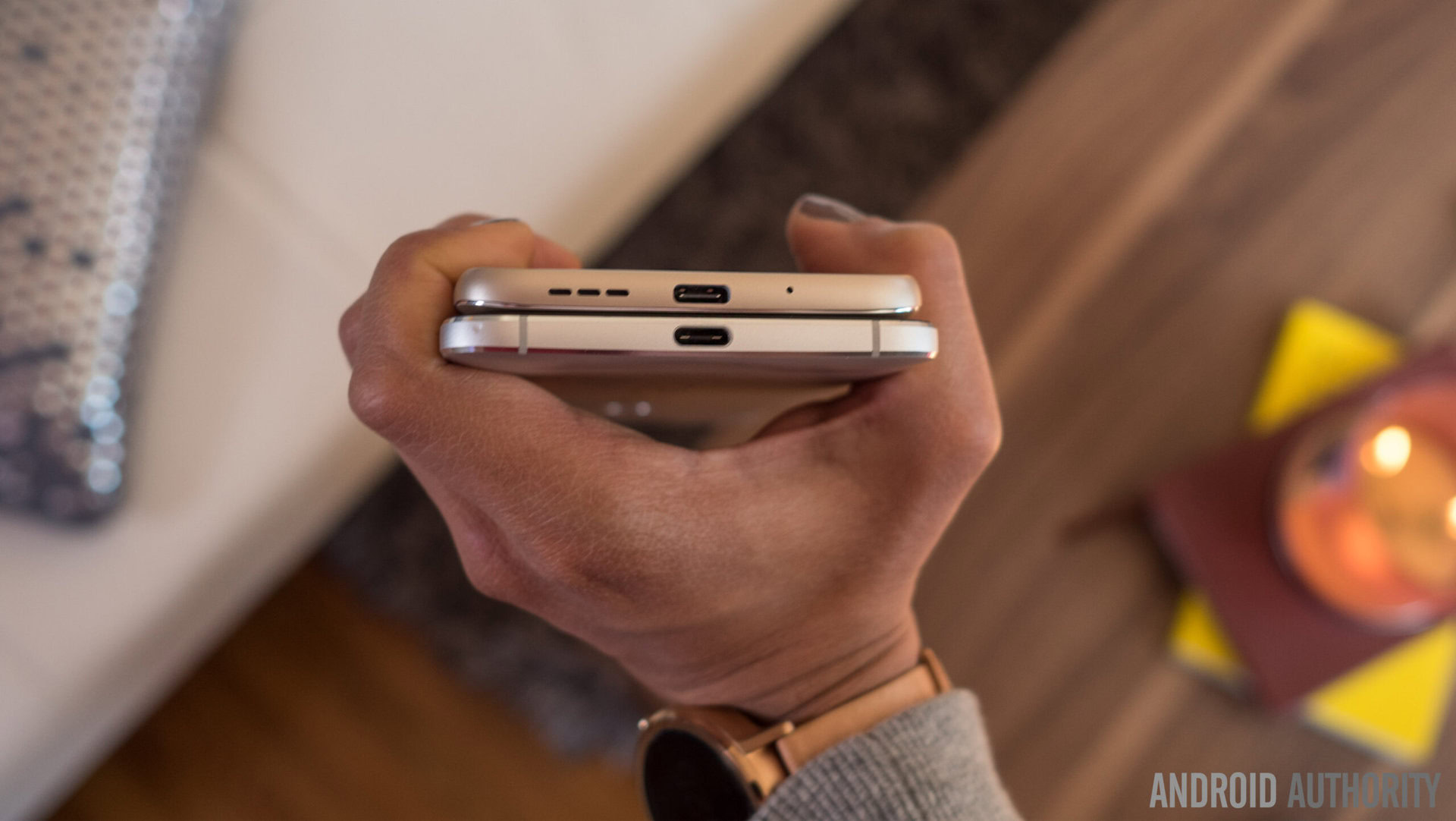
The Nexus 6P is available in 32 GB, 64 GB, and 128 GB storage options, and with no expandable storage available, users will have to pick up one of the higher storage versions to address any concerns they may have. On the other, 32 GB is only built-in storage option available for the LG G5, but you do get expandable storage via microSD card, for up to an additional 200 GB. Both devices come with a standard suite of connectivity options, including NFC.
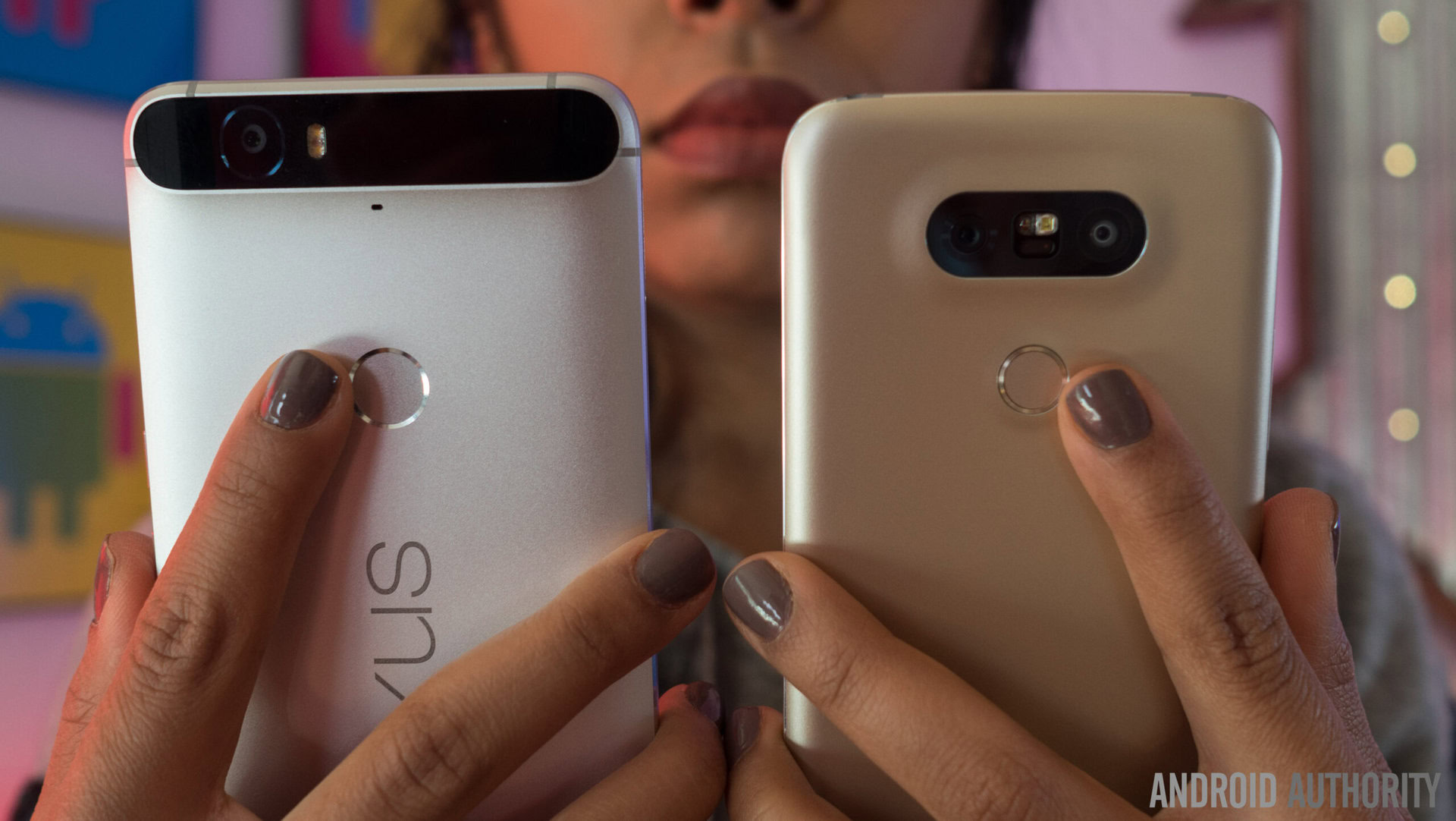
The fingerprint scanner is found on the back with both smartphones, and embedded into the power button in the case of the LG G5. Both scanners are fast and accurate, and unlocks the device and takes you directly to the homescreen very quickly. The scanner of the LG G5 is a touch faster than that of the Nexus 6P, but certainly not enough to be noteworthy. As mentioned, the fingerprint scanner is embedded into the power button of the LG G5, so you certainly won’t have the opportunity to take a look at the lock screen for a quick glance at your notifications on pressing the power button, with the scanner unlocking the device and opening the homescreen instead. The workaround here is the availability of the double tap to wake feature, and of course, some very basic information can already be seen, courtesy of the G5’s Always On display.
The Nexus 6P comes with a dual front-facing speaker setup, allowing for a nice stereo effect when listening to music or watching videos. On the other hand, the LG G5 comes with a single bottom-mounted speaker, that is easy to cover up when holding the device in the landscape orientation. That said, the LG G5 speakers gets just as loud as the Nexus 6P speakers, but the audio quality itself isn’t as good.
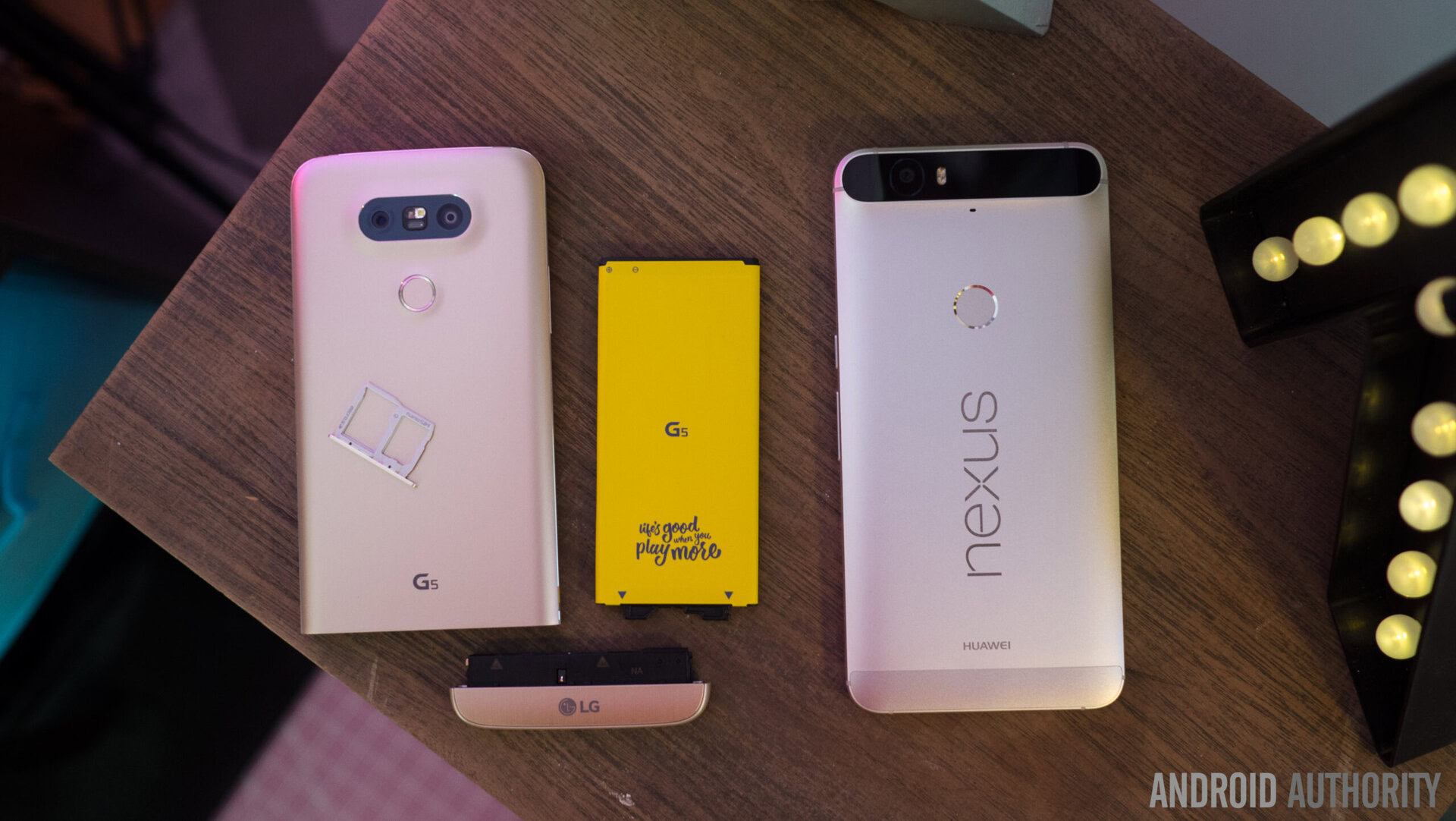
While features like the fingerprint scanner and front-facing speakers are nice additions to the Nexus line, LG takes hardware capabilities in a whole new direction, with the G5 being the first smartphone to offer some form of modular capabilities. The bottom portion of the device disconnects from the main body, and attached to this part is the battery.
Not only do you get to replace the battery if required, but the battery can now also be plugged into a slew of modules that LG calls “Friends.” These include a camera extension with physical buttons and controls, and a Bang & Olufsen Hi-Fi audio module. This modular capability makes the LG G5 stand apart not only from the Nexus 6P, but rather, any smartphone currently available in the market, and with third-party accessory manufacturers able to get into the game, things should get quite interesting.
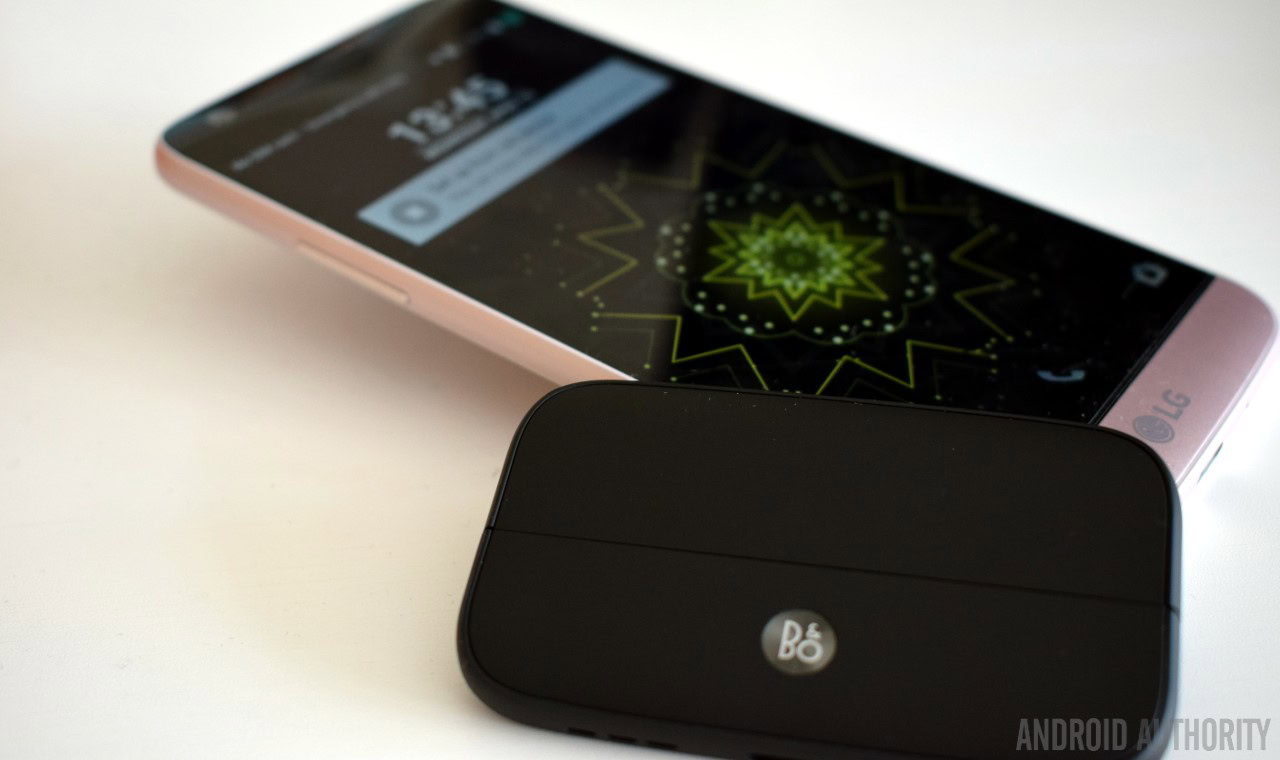
The Nexus 6P comes with a larger 3,450 mAh non-removable battery, compared to the rather small 2,800 mAh unit of the LG G5. The battery life is as expected when looking at those numbers, with the Nexus 6P lasting quite a bit longer than the G5. With moderate use, the Nexus 6P can comfortably last through a full day, with around 4.5 hours of screen on-time, while the LG G5 usually ran out of juice before the end of my day, with around 3.5 hours of screen-on time. Of course, you do have the option of carrying around a spare with the LG G5, which might prove to be necessary for some.
Both smartphones come with USB Type-C ports, USB 3.0 and USB 2.0 in the case of the LG G5 and Nexus 6P respectively, and both devices also come with fast charging capabilities, to have you up and running in no time. Wireless charging isn’t available with either but quick charging makes it easy to top the battery up if you’re running low.
Camera
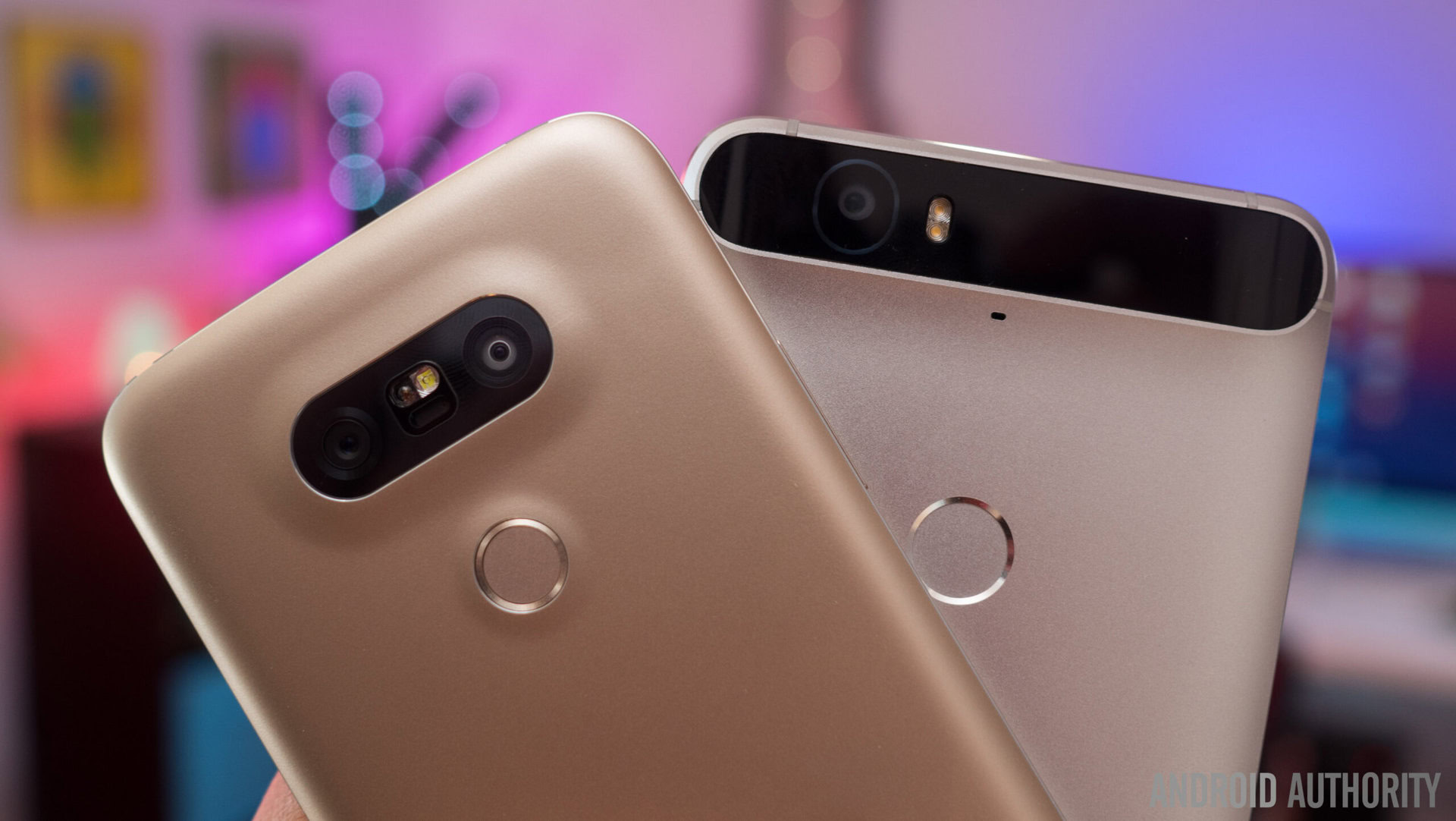
One point of contention with the Nexus line has always been the camera, but that all changed last year with the Nexus 6P. The Nexus 6P features a 12.3 MP sensor with an f/2.0 aperture, and instead of a larger megapixel count, the focus was on pixel size, 1.55µm pixels in this case. The pixels are larger and let in more light, making for faster shutter speeds, crisper images and vibrant colors. However, OIS has surprisingly been left out from Google’s flagship.
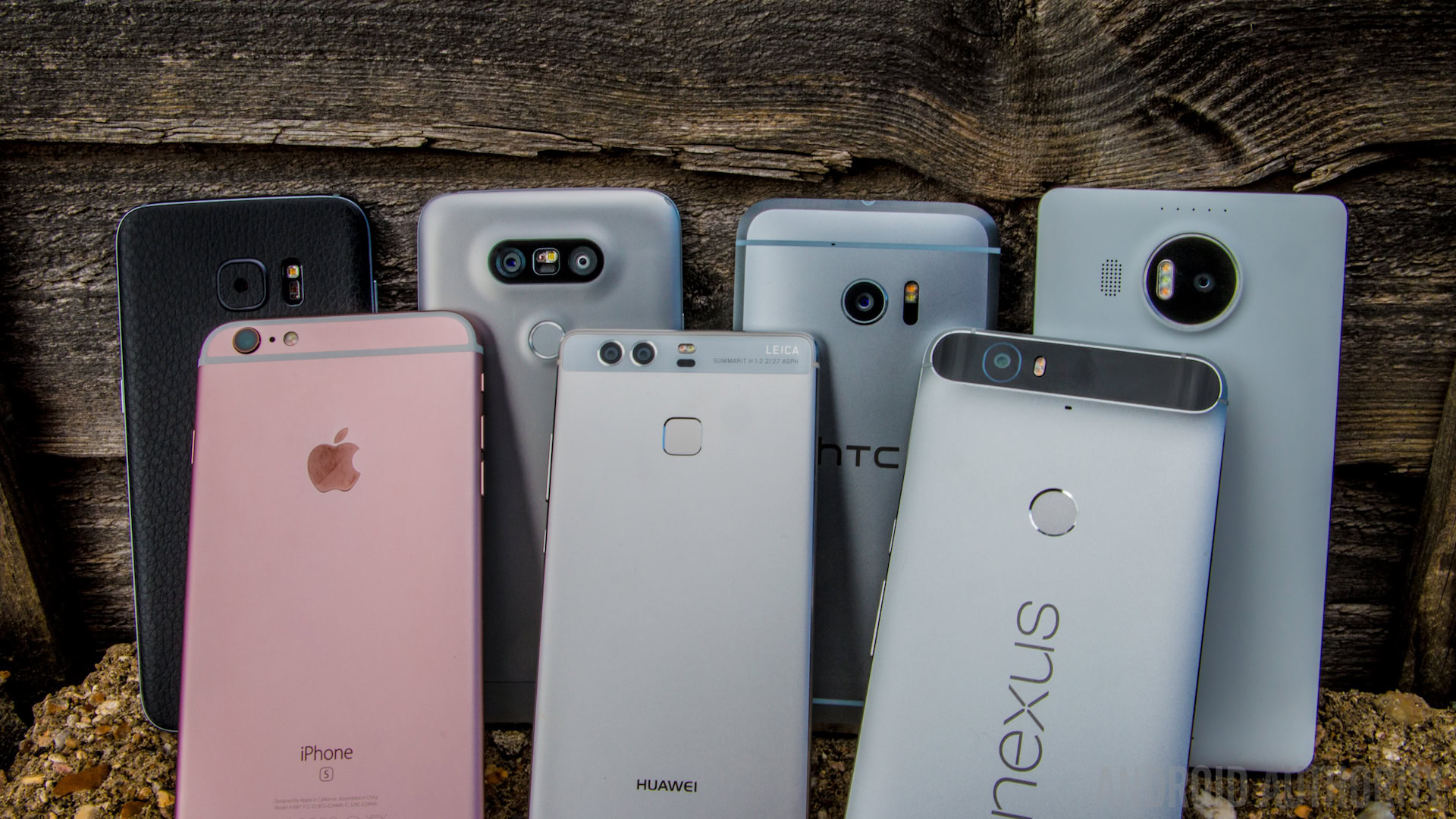
Smartphone cameras have always been one LG’s strengths, and that continues with the LG G5, which comes with a dual-camera setup on the back, with each sensor able to work independently from each other. The primary shooter is a 16 MP unit with a f/1.8 aperture, the secondary rear camera is an 8 MP unit with a wide-angle lens and f/2.4 aperture, and both cameras come with OIS, and can take advantage of the laser auto-focus system.
Taking a look at the pictures above, the first thing you will notice that the main LG G5 camera isn’t as wide-angled as that of the Nexus 6P. At the right side of the photos, the stop sign and tree are seen in the Nexus 6P image, but not with that of the LG G5. Of course, that’s where the secondary camera with the wide-angle lens comes in, which creates an amazing photo, with a lot more in the shot. With HDR off, the LG G5 takes the better shot, with the color reproduction more natural, and with better dynamic range.
With HDR on, or HDR+ in the case of the Nexus, both shots become much better. HDR is a lot more subtle with the LG G5, but with the Nexus 6P, it makes a huge difference. Colors come to life, and the blue of the sky really comes through, much more so than what is seen with the LG G5. That said, there is more contrast with the Nexus 6P, and with the G5, you can actually make out details in the shadows. Colors are a lot deeper on the Nexus 6P, while the G5’s are more bright and realistic. Exposure seems to be better with the G5 as well when HDR is on both. There’s also much more detail when zooming in with the G5 thanks to its extra megapixels.
The wide angle camera, although with it’s noticeable downgrade in megapixel count, creates stunning images. The LG G5 also has a full manual mode, which isn’t available with the Nexus 6P, but even without it, the LG G5 can get a lot closer to the subject, than what is possible with the Nexus device. Overall, the LG G5 is the camera that is more fun to use with all its capabilities.
However, when it comes to low light conditions, the story is quite different. With HDR off, the G5 is a clear winner with it’s brighter image, much better colors, and less noise. But with HDR on, while the G5 creates largely the same image, the Nexus 6P boosts brightness, really saturates colors, and gets rid of all that noise. Granted, the G5 still creates a sharper image, and you could probably end up editing it to make it better, but when taking the shot, the Nexus 6P has the G5 beat in this area.
The selfie camera is another area where the Nexus 6P beats the G5, especially when HDR is on. The G5 struggles with dynamic range with the front facing camera, while the shot taken with the Nexus 6P was perfect. In the image above, where I am standing in the shadow, the LG G5 had to brighten the entire image to capture my face, losing lots of the background. With the Nexus 6P, the detail is a lot better, and the brightness is turned up only around the focal point of the shot.
Nexus 6P camera samples
LG G5 camera samples
When it comes video capture, the LG G5 comes back as the winner, courtesy of the fact that the LG G5 camera comes with OIS, allowing for smooth video recording. Colors are also a lot better, and the overall image is brighter. The LG G5 does hunt around a lot for focus though, and is prone to this weird glitch, where it seems to hunt for the focus every few seconds, though it doesn’t happen often enough to be a major problem. You can also record video using the wide angle lens camera, which is a nice touch and great for vloggers or sharing wide scenes – such as a stadium or conference – with your friends.
Software
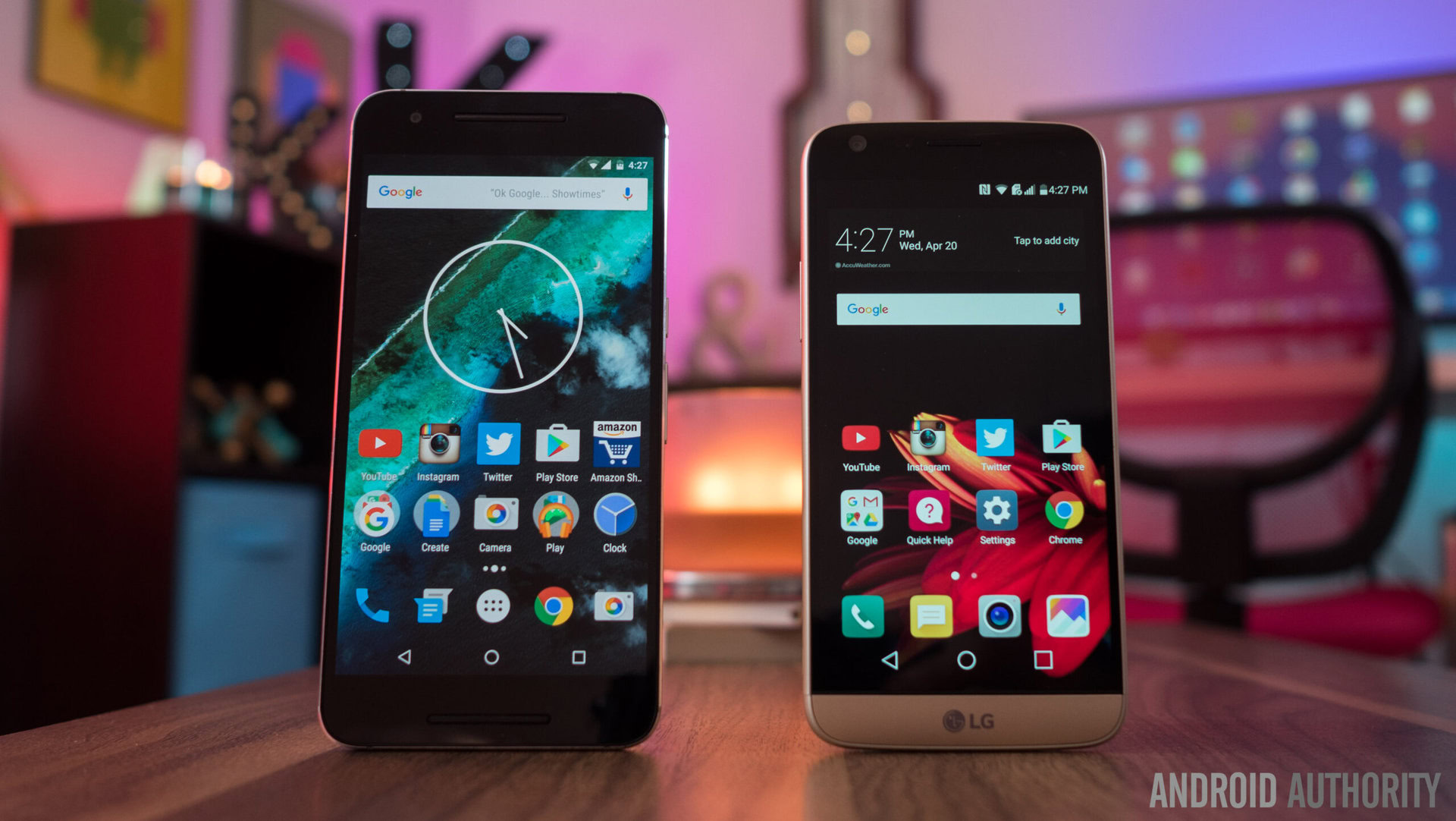
Both smartphones are running Android 6.0.1 Marshmallow, but the experience couldn’t be more different. While the Nexus 6P comes with the purest version of Android available, the LG G5 features a heavily skinned iteration that is quite different. With the Nexus 6P, we see the Android experience Google intended it to be, with the UI following Material Design guidelines, and including only the features that Google deem are worth having.
Nexus 6P
The LG user interface may be a lot cleaner and more toned down this time around, but comes with a few features that aren’t available with the Nexus 6P, such as the ability to change the navigation buttons, and even their color. However, the app icons on the G5 look a little outdated, the folder opening animation comes from the middle of the screen, instead of where the folder is, and the settings menu can be quite hard to navigate through, with its four sections. There’s also no app drawer here, leaving users dependent on folders to stay organized, although LG has made a version with an app drawer available for users to download.
LG G5
Of course, the main selling point with having a stock Android experience also has to do with the ability to receive timely software updates. The Nexus 6P will be one of the first devices to get the next iteration of Android, whenever it is available, while any official update for the LG G5 will take some time. Deciding between the two software packages comes down to personal preference, but if simplicity, and timely updates, are key aspects for you, the Nexus 6P has the leg up here.
Specs comparison
| LG G5 | Nexus 6P | |
|---|---|---|
Display | LG G5 5.3-inch IPS LCD display Quad HD resolution, 554 ppi | Nexus 6P 5.7-inch AMOLED display Quad HD resolution, 518 ppi |
Processor | LG G5 2.15 GHz quad-core Qualcomm Snapdragon 820 Adreno 530 GPU | Nexus 6P 2 GHz octa-core Qualcomm Snapdragon 810 Adreno 430 GPU |
RAM | LG G5 4 GB | Nexus 6P 3 GB |
Storage | LG G5 32 GB expandable via microSD card up to 200 GB | Nexus 6P 32/64/128 GB not expandable |
Camera | LG G5 16 MP rear camera, f/1.8 aperture 8 MP rear camera, wide angle lens, f/2.4 aperture 8 MP front-facing camera | Nexus 6P 12.3 MP rear camera, f/2.0 aperture, 1.55µm pixel size, dual LED flash 8 MP front-facing camera |
Connectivity | LG G5 Wi-Fi 802.11 a/b/g/n/ac Bluetooth 4.2 GPS + GLONASS NFC USB 3.0 (USB Type-C 1.0) | Nexus 6P Wi-Fi 802.11 a/b/g/n/ac Bluetooth 4.2 GPS + GLONASS NFC USB 2.0 (USB Type-C 1.0) |
Battery | LG G5 2,800 mAh removable | Nexus 6P 3,450 mAh non-removable |
Software | LG G5 Android 6.0 Marshmallow | Nexus 6P Android 6.0 Marshmallow |
Dimensions | LG G5 149.4 x 73.9 x 7.7 mm 159 grams | Nexus 6P 159.3 x 77.8 x 7.3 mm 178 grams |
Gallery
Final thoughts
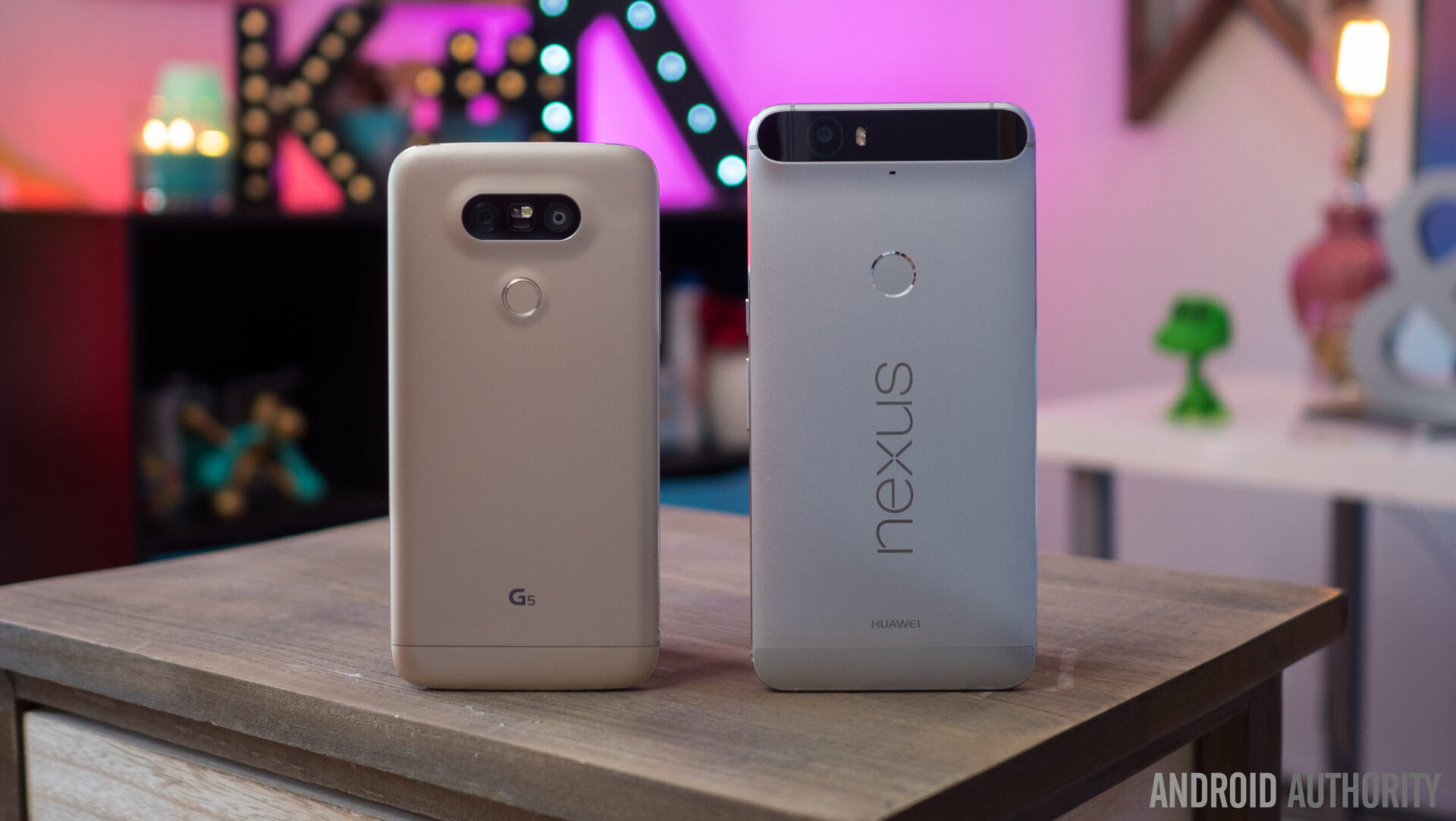
So, there you have it for this in-depth look at the LG G5 vs Nexus 6P! This has been a very back and forth comparison, with one superior to the other in some areas, and vice versa in others. The Nexus 6P remains consistently good across all aspects of the smartphone experience, and while the LG G5 excels in some aspects, it under performs in others, such as battery life.
Of course, one of the big selling points of the G5 is its modular nature, so if that is something you feel like you will use a lot, the choice is obvious. However, if the LG G5’s special features aren’t as important, the Nexus 6P makes for a solid alternative, that is also quite a bit cheaper as well.
Whichever handset you go for, you’re getting one of the best Android experiences available on the market at the moment and if you’re struggling to decide which to buy, check out our LG G5 review and Nexus 6P review for a more in-depth look at each. Which of these would you pick and why? Let us know your views in the comments below!